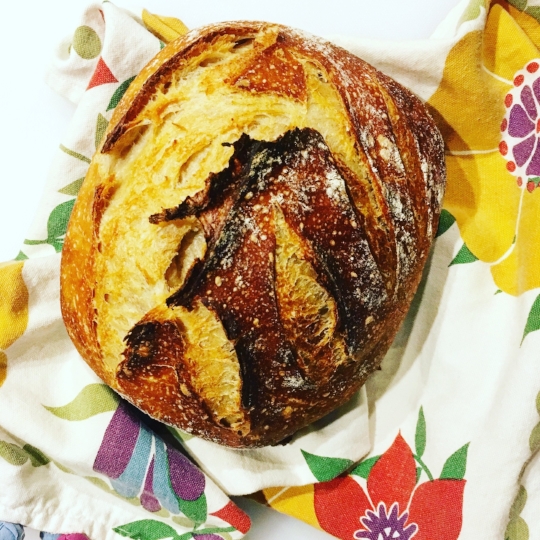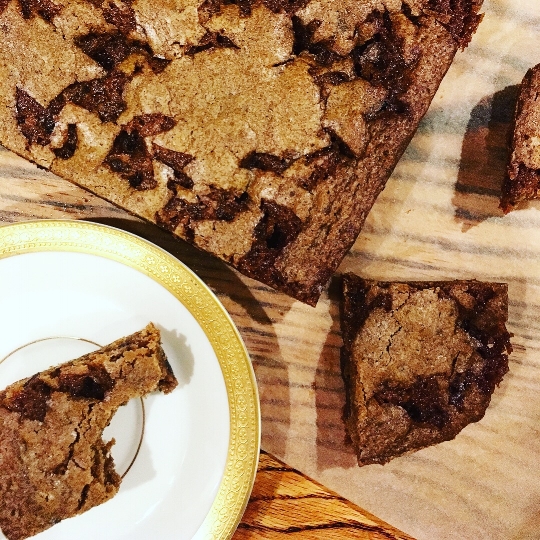Sourdough at Sea Level
Learning how to bake bread is like wanting to climb a really big mountain. You do it because it is there. Because you can. Because it is a challenge. And also because you are a slightly insane person.
I have spent a good portion of my thirties refining how to make bread at home. For many years, I practiced a beautiful technique from Tartine that took all day. Initially, it was romantic starting the process soon after the sun came up and eating it after the sun went down. But this is really best suited for home cooks who do not like other humans very much, since it does not allow for much interaction outside of a rigorous yeast feeding cycle.
I still use that recipe when I have the better part of a day to spare indoors. It is excellent on wintry bomb cyclone days or when I do not want to leave my house (or shower). But the older I get, the less time I am typically willing to part with tending to sourdough and sticky countertops as the rest of the world spins on. So, mostly, I use an alternative method, with some techniques borrowed from the recipe that time forgot.
My approach comes from The New York Times by way of Jim Lahey of the no-knead bread fame. Lahey initially got me into making bread because it was easy. His original recipe calls for dry yeast, but my acquisition of sourdough starter about five years ago left the no-knead version defunct. Sam Sifton has since adapted it using natural leaven and this has been life changing.
We have access to a variety of freshly baked loaves and many okay factory-sliced breads, so no one should be faulted for saving precious minutes buying bread instead of baking it. But paying five or six dollars for a decent loaf seemed outrageous, given a sack of flour costs about as much. So I set out to make bread with minimal life disruption.
There is a good deal of sandwich-making in our household these days. Peanut butter on toast is cheap, filling, and nutritious. (Please do not contact me if you are morally opposed to gluten, I am not.) We go through a lot of bread and so having a regimen is helpful.
I have learned that if I feed the starter at bedtime and take five minutes to mix the dough in the morning before work, it is sated with carbon dioxide when I get home. The loaf still requires some shaping, a little more waiting, plus an hour in the oven, so its presence at the dinner table is unlikely that same evening. But it will be ready for breakfast.
This waiting is important. My main complaint about homemade bread is that it often produces angular irregular slices when cut that call to mind the jagged coast of Maine. From there is it easy to end up with sandwiches that look like a madman with poor attention skills made them (I am not naming names). Letting the loaf sit overnight makes it much easier to slice. The microbes in the starter also release compounds that help preserve the bread, so it lasts longer before going bad.
All that aside, it is delicious, as most sourdough breads tend to be. The crumb is toothsome and chewy. Adding a little whole grain flour offers a slightly more complex flavor, but you can still get good results without it—so do not plan a special trip to the grocery store. Regardless, it will be bread of finest quality that still allows you to interact with friends.
It is not made quickly, but most of the work is done while you are outdoors living your very best non-reclusive life. Eating homemade bread that tastes good feels both life sustaining and affirming in the moment. Which I suspect is the allure of climbing a very big, dangerous mountain too. Luckily, baking at sea level is enough for me.
Sourdough Bread
Adapted from Sam Sifton of The New York Times with some guidance from Tartine Bread by Chad Robertson
Ingredients:
- 325 grams (2⅔ cups) bread flour
- 100 grams (¾ cup plus a tablespoon) spelt (or whole wheat) flour
- 6 grams (1 teaspoon) kosher salt
- 180 grams (¾ cup) fed sourdough starter (see night before instructions)
- additional flour for dusting
- handful of oats
Instructions:
the night before
Feed the starter. This involves replacing part of the starter with roughly an equal portion of flour and water. See here for more technical additional instructions. I usually discard two-thirds of the starter during the feeding. (For instructions on how to make pancakes with your discarded starter click here.) Allow about 8 to 9 hours for your starter to grow before prepping the dough.
the day of
In a large mixing bowl, combine the flours and salt. In a medium bowl, combine the fed starter with 300 grams (about 1¼ cups) lukewarm water—stir until fully combined. Pour into the bowl with the flour and mix until just combined.
Cover with plastic wrap and then with a kitchen towel; let sit for 11 to 12 hours. (During this time it will double in volume and become light and puffy.)
Place the kitchen towel on a table and dust with a very generous amount of flour (no need to dust the whole towel, just a large circle where you intend to place the dough). Use more flour than you think you need, it helps prevent the dough from stickin to the towel. Dust the surface of the dough with a little flour.
Using flour-coated hands, pull the dough out of the bowl and onto the floured towel. Take an edge of the dough and pull it up and towards the center of the dough. Continue with the next section and repeat until you form a round loaf. (This will take five or six sections until you have worked all the way around the dough.)
Then gently roll the dough so that the seam is on the bottom by taking the section near you and wrap it up and over while gently rolling the rest towards you. The top of the dough should be the smooth side, with the seam underneath.
Gently cover the dough with the edges of the kitchen towel (be sure your towel is big enough to cover the whole loaf so no area of the dough is left exposed). Let rest for about 2 hours (it will roughly double in size).
Thirty minutes before you intend to bake (usually 1½ hours after the shaping) set the oven to 500 degrees and place a Dutch oven or roasting pan with a lid in the oven to preheat. (Be sure what you use has parts that will safely withstand high heat—I have one of those speckled Granite Ware roasting pans.) This helps to trap enough moisture from the loaf to expand and create a robust crackling crust.
I also recommend scoring the bread, which you can do with a bread lame. In all honestly, I have had better luck with new replacement blades for box cutters. You can buy a whole box fairly cheaply—but use them at your own risk. Whatever you decide to use, have it nearby when you are ready to put the loaf in the oven. (Alternatively, you can forgo scoring the bread. You will still have a very nice loaf, but the scoring helps the bread fully expand in the oven.)
When you are ready to bake the bread, carefully remove the hot pan from the oven and take off the lid. Scatter some oats on the bottom of the pan. Gently peel the loaf from the towel and place it, seam side down, into the hot pan.
Working quickly, score the bread if you are doing so. I often make a square with four cuts in the center. For the loaf you see above, I made one long cut on the side and then four small cuts at an angle on the right. Scoring bread is a process that takes time and I am still learning.
Place the hot lid back on the pan and lower the heat to 450 degrees. Bake for 30 minutes then remove the lid and continue to bake for another 20 minutes or so, until the top is dark golden brown and chestnut in spots with a crackled crust.
Remove from the pan and allow to fully cool before slicing. (I let mine cool overnight uncovered and slice in the morning.)
Makes one loaf
Note:
- Weight measurements are listed first because I bake using weight instead of volume measurements whenever possible. Depending on how much flour I have I typically use 50 to 100 grams of whole grain. The total weight should be 425 grams of flour.





